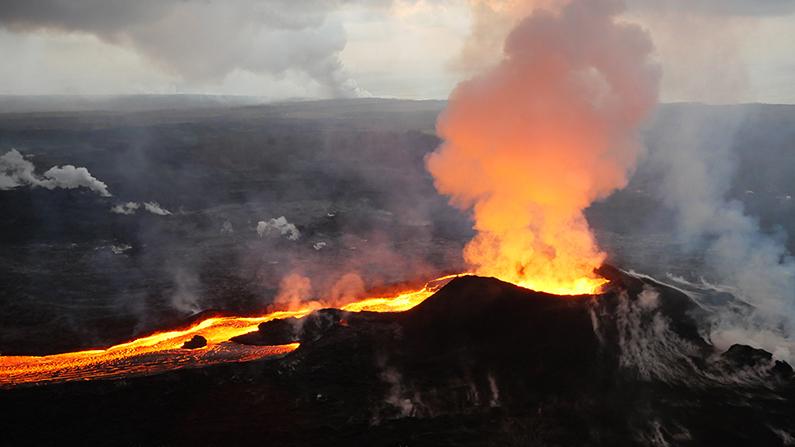Hawaii’s Kilauea volcano continues to erupt, spreading a layer of lava that has added about 700 acres of fresh land to the Big Island.

Early morning view of fissure 8 and lava channel looking toward the east. The laze plume from the ocean entry is visible in distance (left of the fissure 8 plume) on July 14, 2018. USGS

Chris Jasurek
Writer
|Updated:



